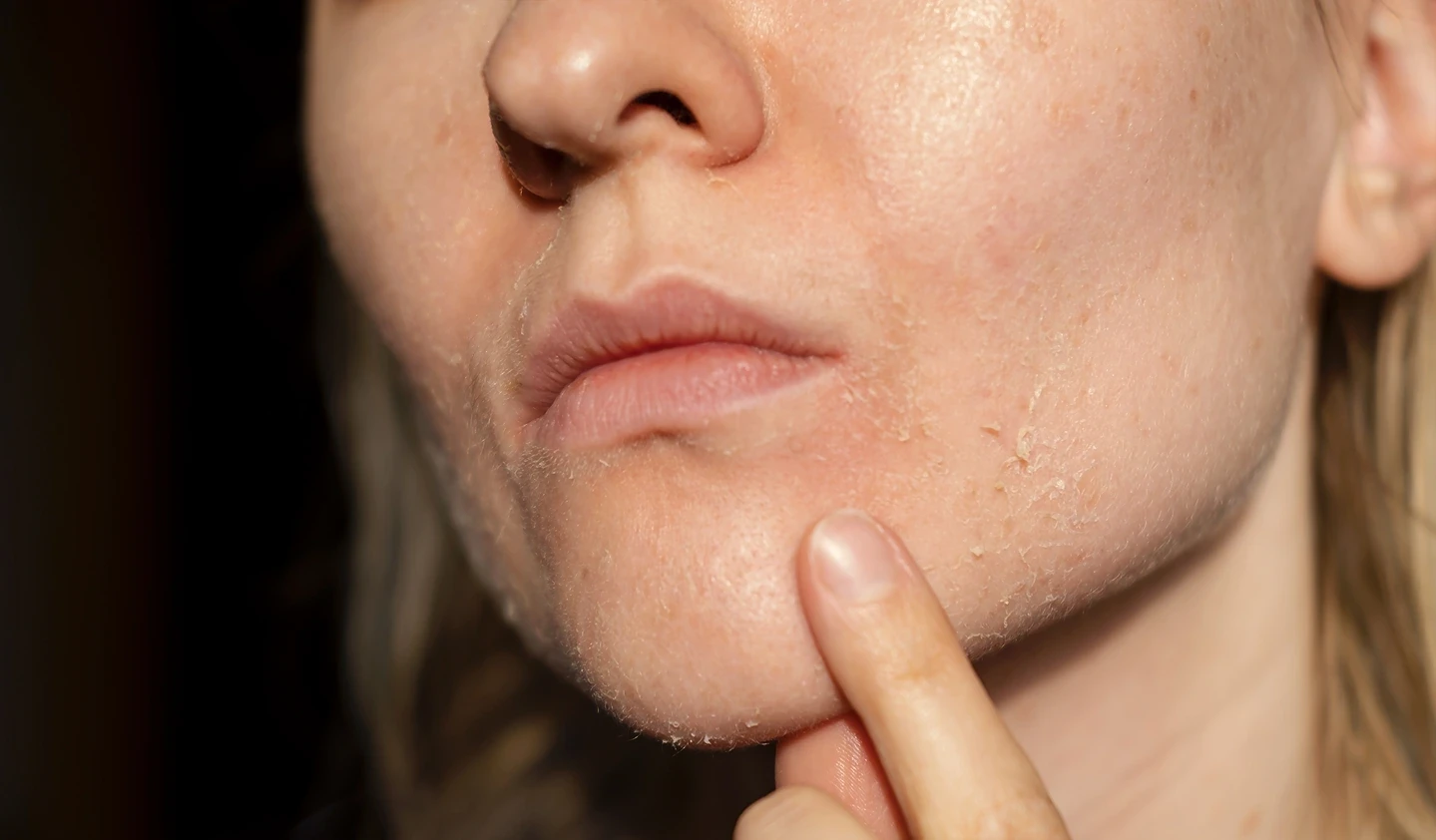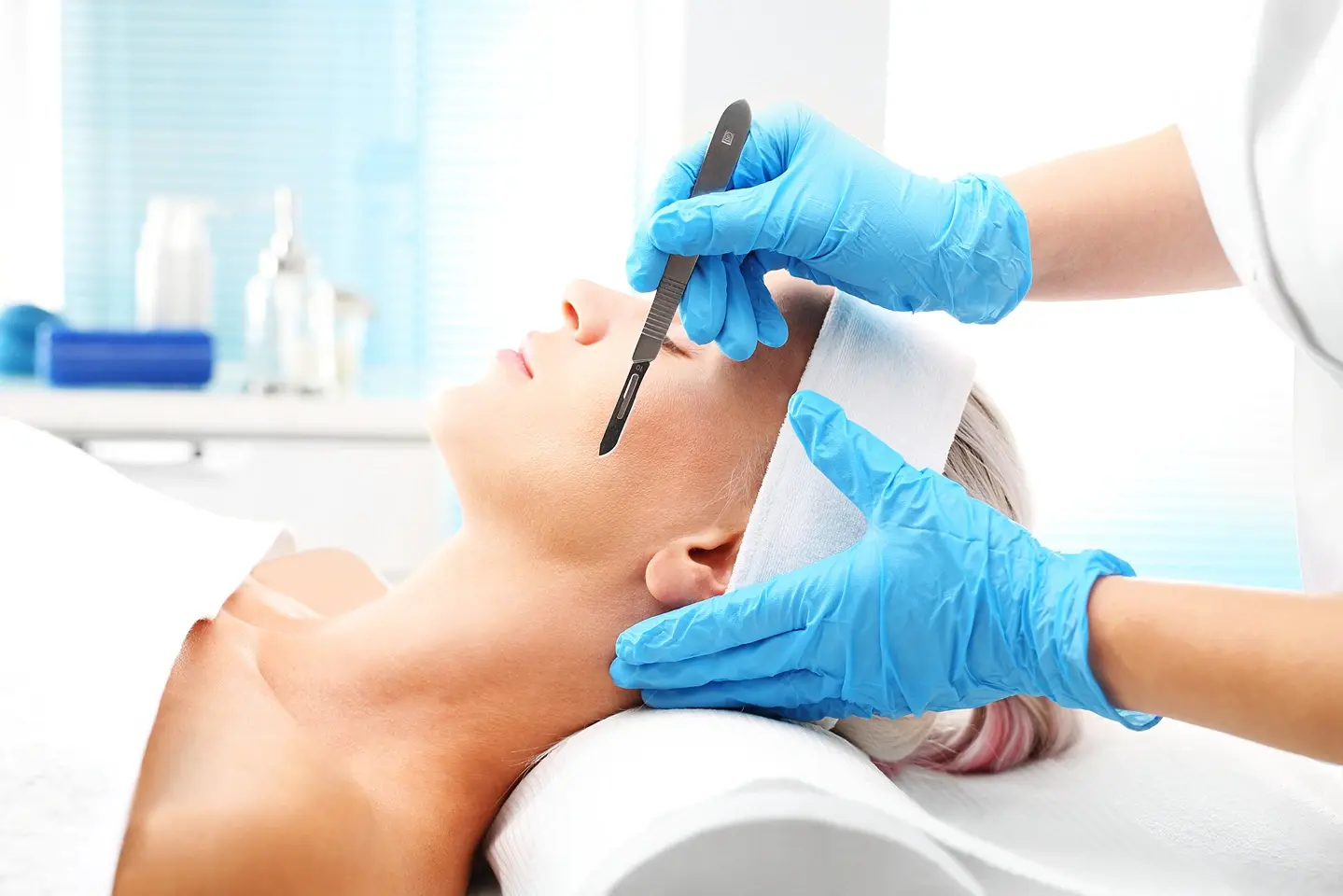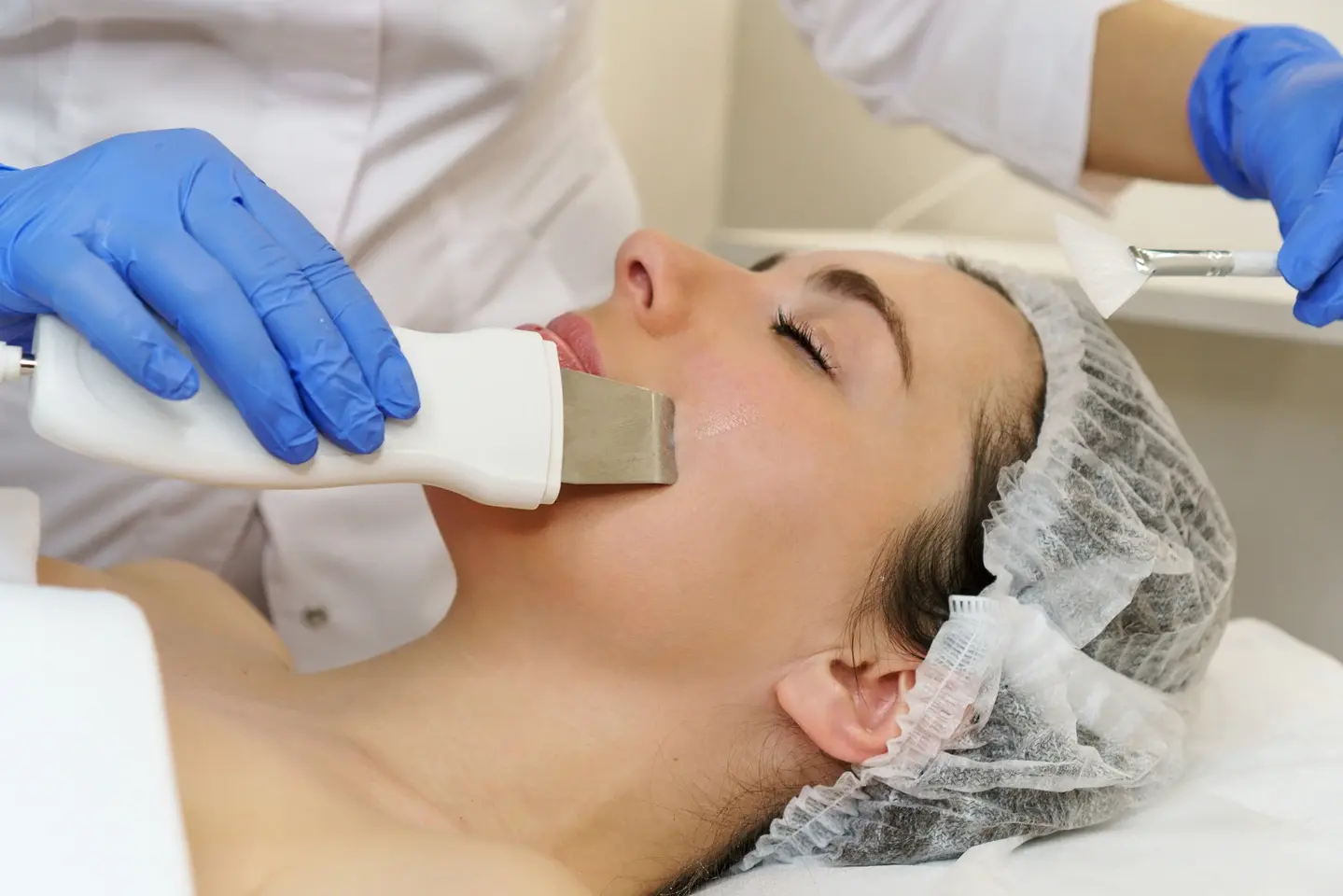Discover the benefits of sonic dermaplaning for removing peach fuzz and dead skin cells. Learn how to use a dermaplaning device at home for smoother, more radiant skin.
Sonic Dermaplaning: The Secret to Smoother, More Radiant Skin

If you’re looking for a way to achieve smoother, more radiant skin, sonic dermaplaning may be the answer. This popular skincare treatment uses a specialized device to gently exfoliate the skin and remove peach fuzz and dead skin cells.
In this comprehensive guide, we’ll cover everything you need to know about sonic dermaplaning, including its benefits, how to use a dermaplaning device at home, and tips for getting the best results.
What is Sonic Dermaplaning?
Sonic dermaplaning is a type of facial exfoliation that uses a specialized device with a vibrating blade to gently scrape away dead skin cells, peach fuzz, and other impurities from the surface of the skin. The sonic technology helps to enhance the exfoliation process, making it more effective than traditional dermaplaning methods.
The treatment is typically performed by a skincare professional in a salon or spa setting, but there are also at-home dermaplaning devices available that allow you to achieve similar results in the comfort of your own home.
How Does Sonic Dermaplaning Work?
During a sonic dermaplaning treatment, a skincare professional or at-home user will hold the dermaplaning device at a 45-degree angle against the skin, with the blade facing downward. The device is then gently glided over the skin in short, feathery strokes, removing the top layer of dead skin cells and peach fuzz.
The sonic technology in the device helps to enhance the exfoliation process by creating micro-vibrations that gently lift and remove dead skin cells and peach fuzz more effectively than manual dermaplaning methods. This results in smoother, softer, and more radiant-looking skin.
Benefits of Sonic Dermaplaning
Here are 5 benefits of sonic dermaplaning into your skincare routine, including:
1. Smoother, softer skin: By removing the top layer of dead skin cells and peach fuzz, sonic dermaplaning leaves your skin feeling incredibly smooth and soft. This can help to improve the overall texture and appearance of your skin, leaving it looking more youthful and radiant.
2. Enhanced product absorption: With the removal of dead skin and peach fuzz, your skincare products are able to penetrate more deeply into the skin, making them more effective. This means that your serums, moisturizers, and other skincare products can work more efficiently to hydrate, nourish, and protect your skin.
3. Makeup goes on more smoothly: Sonic dermaplaning creates a smooth, even canvas for makeup application, allowing your foundation and other products to glide on effortlessly. This can help to create a more flawless, airbrushed look and can even help your makeup to last longer throughout the day.
4. Reduces the appearance of fine lines and wrinkles: By promoting cell turnover and increasing collagen production, sonic dermaplaning can help to reduce the appearance of fine lines and wrinkles over time. This can lead to a more youthful, rejuvenated appearance and can help to slow down the visible signs of aging.
5. Improves skin texture and tone: Regular sonic dermaplaning treatments can help to improve overall skin texture and tone, leaving you with a more radiant, youthful-looking complexion. By removing dead skin cells and promoting cell turnover, sonic dermaplaning can help to even out skin tone and texture, reducing the appearance of hyperpigmentation, acne scars, and other imperfections.
Who Can Benefit from Sonic Dermaplaning?
Sonic dermaplaning is a safe and effective treatment for most skin types and can be particularly beneficial for those with:
- Dull, dry, or rough skin
- Uneven skin texture or tone
- Fine lines and wrinkles
- Excess peach fuzz or vellus hair
- Acne scars or hyperpigmentation
However, it’s important to note that sonic dermaplaning may not be suitable for everyone. If you have active acne, rosacea, or other skin conditions, it’s best to consult with a skincare professional before trying sonic dermaplaning to ensure that it’s safe and appropriate for your skin type.
How to Use a Sonic Dermaplaning Device at Home

While professional sonic dermaplaning treatments can be expensive, there are now several at-home devices available that allow you to achieve similar results in the comfort of your own home. Here’s how to use a sonic dermaplaning device:
1. Cleanse your skin: Before using your dermaplaning device, make sure to thoroughly cleanse your skin to remove any makeup, dirt, or oil. This will help to ensure that the device can work effectively and will reduce the risk of irritation or infection.
2. Hold the device at a 45-degree angle: Hold the dermaplaning device against your skin at a 45-degree angle, with the blade facing downward. This will help to ensure that the blade can effectively remove dead skin cells and peach fuzz without causing irritation or damage to the skin.
3. Use short, gentle strokes: Using light pressure, glide the device over your skin in short, gentle strokes. Be careful not to press too hard or go over the same area multiple times, as this can cause irritation and redness. Focus on one area of the face at a time, such as the cheeks, forehead, or chin.
4. Avoid sensitive areas: Avoid using the device on sensitive areas like the eyes and lips, as well as any areas with active breakouts or irritation. These areas are more delicate and can be easily irritated by the exfoliation process.
5. Moisturize after use: After using your dermaplaning device, follow up with a gentle moisturizer to soothe and hydrate the skin. Look for a moisturizer that is non-comedogenic and fragrance-free to avoid irritation and clogged pores.
How Often Should You Use a Sonic Dermaplaning Device?
The frequency with which you use your sonic dermaplaning device will depend on your skin type and sensitivity level. In general, it’s recommended to start with once a week and gradually increase to twice a week if your skin can tolerate it.
It’s important to listen to your skin and pay attention to any signs of irritation or redness. If you notice any discomfort or sensitivity, reduce the frequency of your treatments or stop altogether until your skin has had a chance to recover.
Tips for Getting the Best Results from Sonic Dermaplaning
To get the most out of your sonic dermaplaning treatments, keep these tips in mind:
1. Start with clean, dry skin: Make sure your skin is thoroughly cleansed and dried before using your dermaplaning device. This will help to ensure that the device can work effectively and will reduce the risk of irritation or infection.
2. Use light pressure: Avoid pressing too hard with the device, as this can cause irritation and redness. Use light, gentle pressure instead, and let the sonic technology do the work for you.
3. Don’t overdo it: Limit your at-home dermaplaning treatments to once or twice a week to avoid over-exfoliating the skin. Over-exfoliation can lead to irritation, dryness, and even breakouts, so it’s important to give your skin time to recover between treatments.
4. Follow up with skincare: After dermaplaning, be sure to apply a gentle moisturizer and sunscreen to protect and nourish the newly-exfoliated skin. Look for products that are non-comedogenic and fragrance-free to avoid irritation and clogged pores.
5. Replace blades regularly: If you’re using a device with replaceable blades, be sure to switch them out after every few uses to ensure optimal performance and hygiene. Dull or dirty blades can cause irritation and even infection, so it’s important to keep them clean and sharp.
Sonic Dermaplaning vs. Traditional Dermaplaning

While both sonic and traditional dermaplaning can be effective for removing peach fuzz and dead skin cells, there are some key differences between the two methods.
Traditional dermaplaning typically involves the use of a manual scalpel or blade to gently scrape away dead skin cells and peach fuzz. This method can be effective, but it requires a steady hand and a good deal of skill to avoid nicks and cuts.
Sonic dermaplaning, on the other hand, uses a specialized device with a vibrating blade to gently exfoliate the skin. The sonic technology helps to enhance the exfoliation process, making it more effective and less likely to cause irritation or damage to the skin.
Another key difference between the two methods is the speed and efficiency of the treatment. Sonic dermaplaning can typically be completed in a matter of minutes, while traditional dermaplaning may take longer and require more passes over the skin to achieve the same level of exfoliation.
Conclusion
Sonic dermaplaning is a highly effective way to achieve smoother, more radiant skin by removing peach fuzz, dead skin cells, and other impurities from the surface of the skin. Whether you opt for professional treatments or use an at-home device, incorporating sonic dermaplaning into your skincare routine can help to enhance product absorption, improve makeup application, and promote a more youthful-looking complexion.
By following the tips and guidelines outlined in this guide, you can enjoy all the benefits of sonic dermaplaning while minimizing the risk of irritation or damage to your skin. With regular treatments and a consistent skincare routine, you can achieve your best skin yet and enjoy a more confident, radiant complexion.







